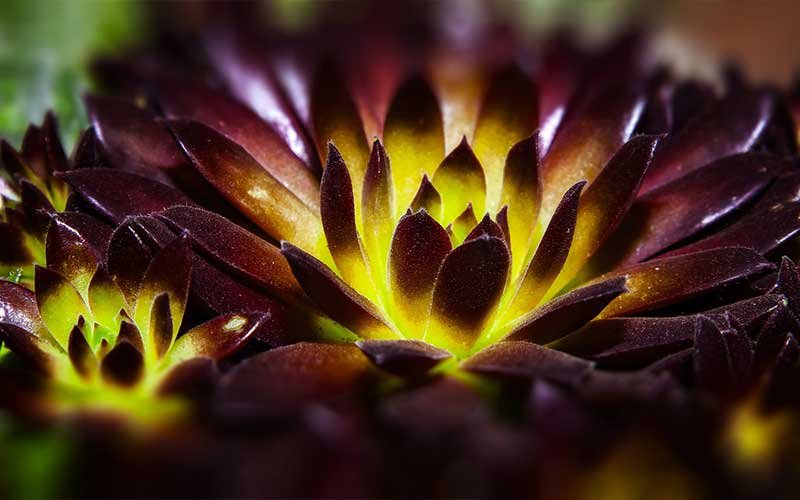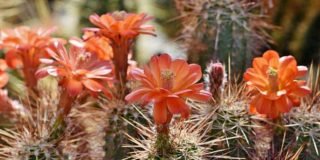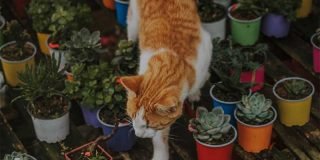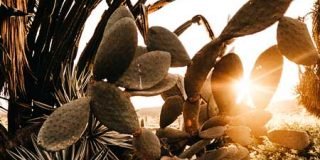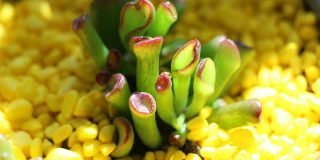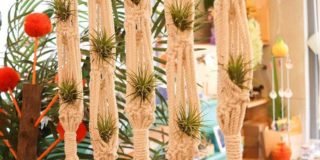Contents
Dark-colored succulents can effortlessly add contrast and character to any garden because of their hue, especially when they bloom. In this article, we’ll tell you how and why some succulents get their dark colors, and we’ll also share some tips on how to care for these unique succulent varieties.
Why Do Succulents Change Colors?
Succulents turn dark in color as a response to the extreme conditions in their environment. Below are the common conditions that cause some plants to become dark-colored:
- Excessive exposure to full sun
- Extreme temperature
- Underwatering
- Underfed or under fertilized
- Poor soil
The conditions mentioned above cause stress to your succulents. The change in color is a reaction to the extremes in the environment.
Many types of succulents are native to arid regions, while some come from mountains, rainforests, and sea coasts. Their natural habitats explain why they grow even more beautiful when exposed to a stressful environment.
While succulents naturally grow in desert conditions, most plants will not stand a chance. The natural habitat of succulents is too rigid for other plants to survive. Because of this, succulents are very resilient and can thrive even in the most extreme environment. So, when your succulents experience stress during cultivation, it’s almost like they’re back to their natural habitat.
These conditions do not harm the plants because they were made to live under these conditions. Succulents possess qualities that will make them survive and flourish in these environments.
Succulents change colors because of their natural pigments called anthocyanins and carotenoids. These pigments are also found in fruits that are high in antioxidants like blueberries, plums, and raisins and vegetables like eggplant and purple cabbage. These pigments that provide us antioxidants through fruits are also found in plants and are responsible for giving protection from the environment. It’s a built-in mechanism in plants that protect it from extreme heat and drought.

What Causes Stress to Succulents?
It’s essential to note that not all stress is good for your succulents. When your plants change color while maintaining their original leaf shape and feature, then there’s no need for you to worry. However, when your succulents look disfigured, distorted, or generally unwell, it might be under bad stress.
Identifying the type of succulent you have will help you determine the kind of stress affecting your plants. Some succulents naturally get reddish colors on the tip of their leaves when they are overexposed to the sun. The plant copes with the extreme heat by producing carotenoids, a red pigment that helps protect the plant from sunburn. We call this environmental condition good stress because the plant is not damaged but becomes more beautiful and colorful instead.
But if you see reddish tints on your succulent leaves and stems, it can also be a sign of pest infestation. Spider mites usually leave red marks on the plant that they infest. The leaves of an infested succulent will also appear distorted. This condition is considered bad stress because it harms the plant, and there is a need for you to intervene to save the plant.
Some succulent varieties turn a stunning shade of dark purple or black when under good stress. However, if your plants become black, starting from its roots to its leaves, and the leaves begin to fall off, you should act immediately to save your plant from harmful stress. The roots of your plant are likely rotting, and if you don’t move fast enough, the stem and the leaves will also turn black, and you will lose your treasured succulent.
What Succulents Change Colors?
Not all succulents change colors because of stress. Some varieties stay naturally green no matter where you place them. The changing color of plants depends on their natural pigmentation. The “Elephant Bush” is a popular succulent that retains its green color all year long, no matter the climate and growing condition. The shade of green will vary a little depending on light exposure, but it’s green just the same.
It’s not very difficult to know the kind of succulent you have to determine whether their change in color is due to good stress or bad stress.
Here is a list of the most common dark-colored succulents that you can add to your growing collection. All of these are flowering succulents, and they can surely add pizazz to your garden.
Aeonium Black Rose

Among all succulent varieties, the Aeonium Arboreum ‘Zwartkop’ (Aeonium Black Rose) is probably one of the most stunning. It has large rosettes with deep purple to almost black leaves. The plant can grow to nearly three feet tall, and the rosettes can reach up to eight inches in diameter. It’s tall and branches out in clumps. When planted outdoors, the Aeonium Arboreum will spread and grow into a bush.
The Aeonium Arboreum is native to North Africa. It grows in the winter and goes dormant in summer. Plant this succulent in well-draining soil to prevent root rot. You can try this succulent soil from Sprig & Stone, which allows air circulation around roots.
Aeonium Arboreum requires proper watering techniques to grow. They will thrive in full or partial sun, and the leaves will have a deeper color as the plant receives more light. They are not cold hardy plants, so make sure to bring them indoors during winter.
Aeonium Arboreum is monocarpic, but it takes several years before it blooms and produces beautiful yellow flowers. These succulents can be propagated through stem cuttings. Use a clean, sharp knife or pair of scissors to remove the stem from the main plant and allow it to dry for a few days before you plant it.
Echeveria Black Prince
This black succulent boasts of symmetrical rosette pattern that Echeverias are famous for. They are petite and grows to only about three inches in diameter. It has broad, triangular leaves that grow from green to deep-brown black as the plant ages and receive more sun.
In late autumn to early winter, a green stalk emerges at the center of its rosette, where red flowers will appear. The color of the flower gives an exciting contrast to the color of the leaves. Black Prince requires partial sun, soak-dry watering technique, and well-draining soil. They cannot survive in a cold climate.

Black Prince grows in clusters. It produces offshoots that can be removed and planted in pots or outdoors as a groundcover. It can also be propagated by taking a healthy leaf from your plant and laying it on a well-draining soil once dry. Because of its size, Black Prince can make for a perfect addition to your fairy garden.
Get your first Echeveria Black Prince here.
Echeveria Black Knight
The Black Knight has fleshy leaves that are arranged in a rosette form. Vibrant green leaves grow at the center of the plant and become deep-purplish black as they grow.
In late summer to early fall, thin lime green stems emerge from the center of its rosette. Bright red flowers grow from these stems, which provides a stark contrast against the dark color of the leaves.
The Black Knight is native to Canada and Mexico, so they cannot survive the cold climates. It’s best to take them indoors during winter. They also require partial sun and infrequent watering. Avoid making it sit too long on moist water as it can cause the roots to rot.
Be careful not to put it in a too-small container to avoid suppressing the roots. Large pots will also allow water to sit in, so choose a container that will fit the size of your succulent perfectly. Choose a suitable-sized container like this to make sure your Black Prince grows well.
Black Prince can be propagated from the leaf or stem cuttings, and its seeds.
Chinese Jade
Sinocrassula yunnanensis, also known as Chinese Jade, is a small succulent with leaves arranged in a rosette pattern. The leaves are covered in short, fine hairs and are flat on one side and rounded on the other.
Chinese Jade grows best in partial sun and well-draining soil. Make sure that the soil has completely dried out before you water it again to avoid root rot.
Chinese Jade is a unique monocarpic succulent. The rosettes produce long stems where tiny white flowers emerge. When the flowers bloom, the rosettes die, and the offshoots then take the place of the mother plant. They can also be propagated through leaf cuttings.
You can get this unique dark-colored flowering succulent here.

We at Eden Succulents strive to give you only the best information about succulents. To make sure that you care for your dark-colored succulents properly and get the best out of them, please check the products we recommended above. They will make growing and caring for your succulents a blissful experience.
Josh's Frogs Succulent Soil
- Use for HEALTHY succulents and cactus
- Allows water to drain quickly to PREVENT ROOT ROT
- Allows AIR CIRCULATION around roots

